Marshall Cox, CEO of Radiator Labs discusses the problems with steam heat. He explains how using heat data can solve for comfort and lower cost.
VIEW PRESENTATION:
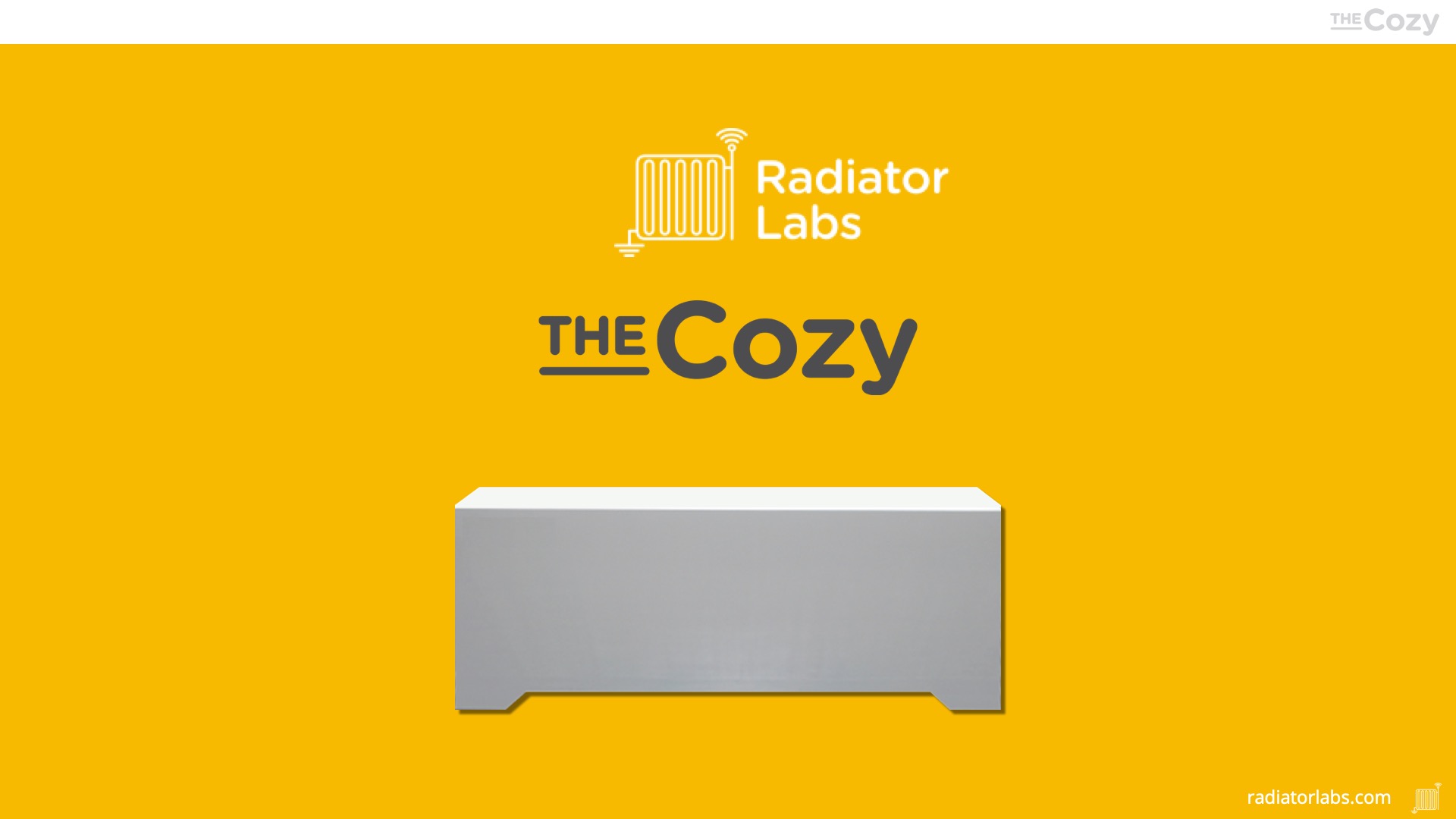
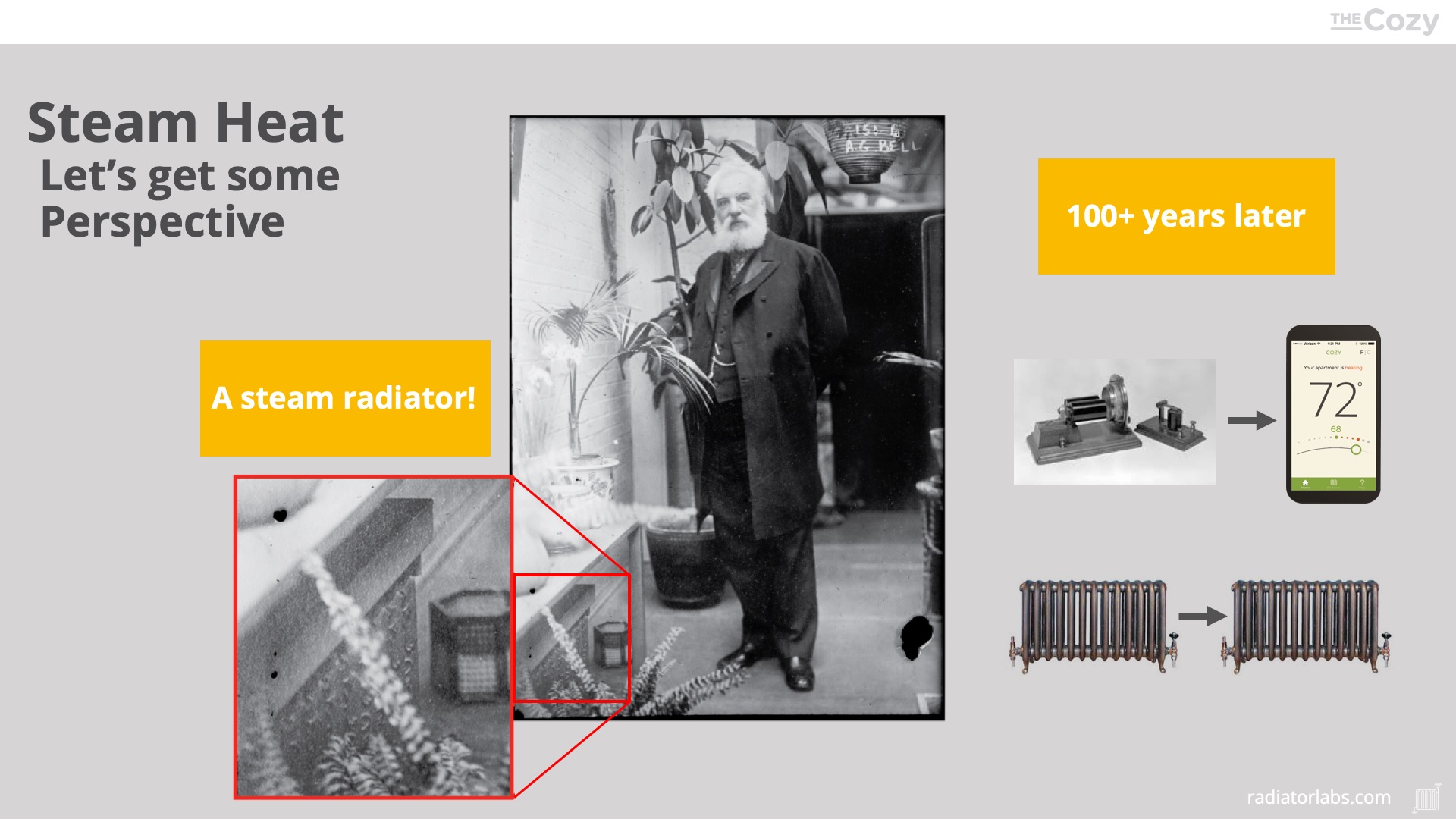
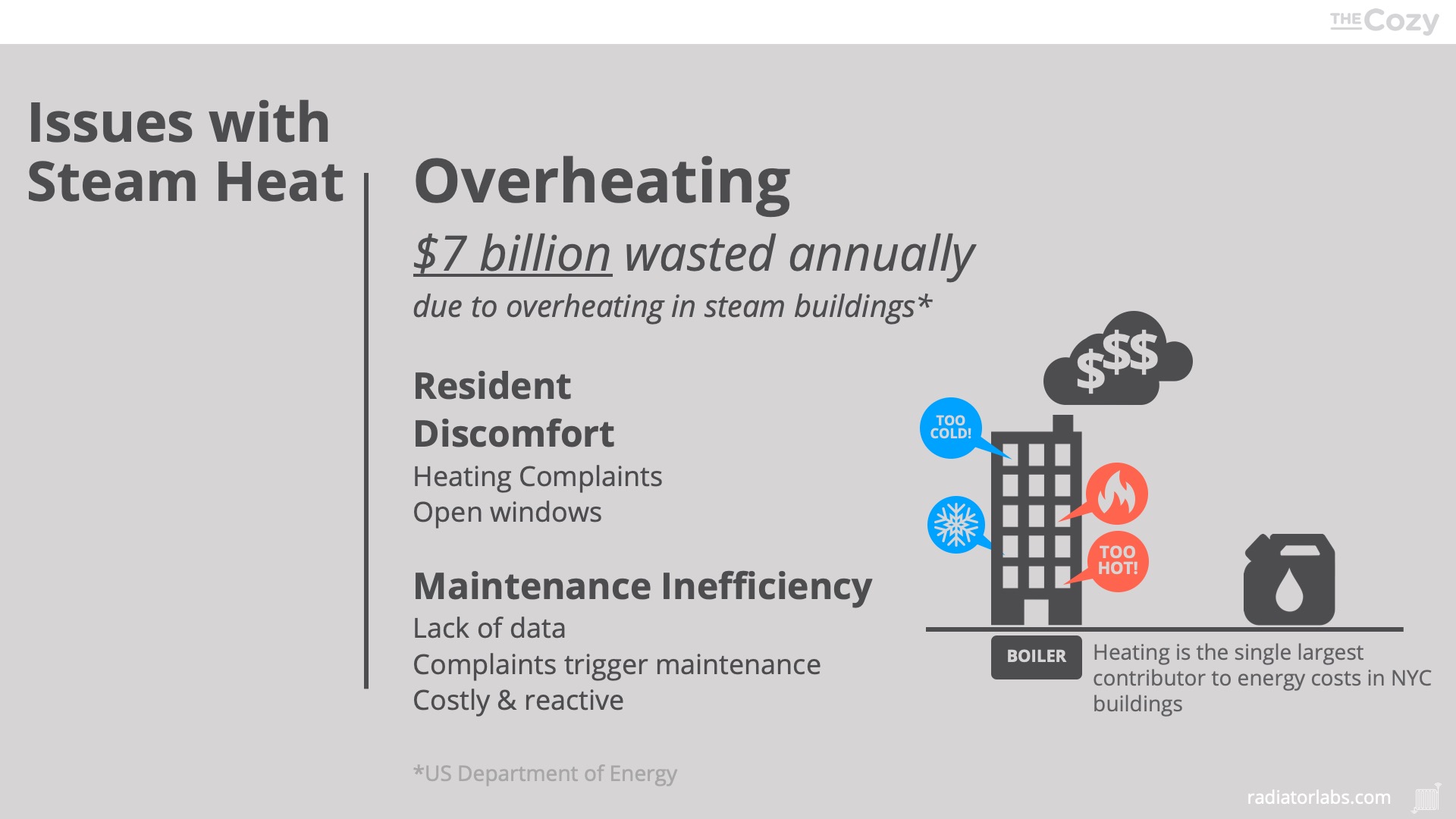
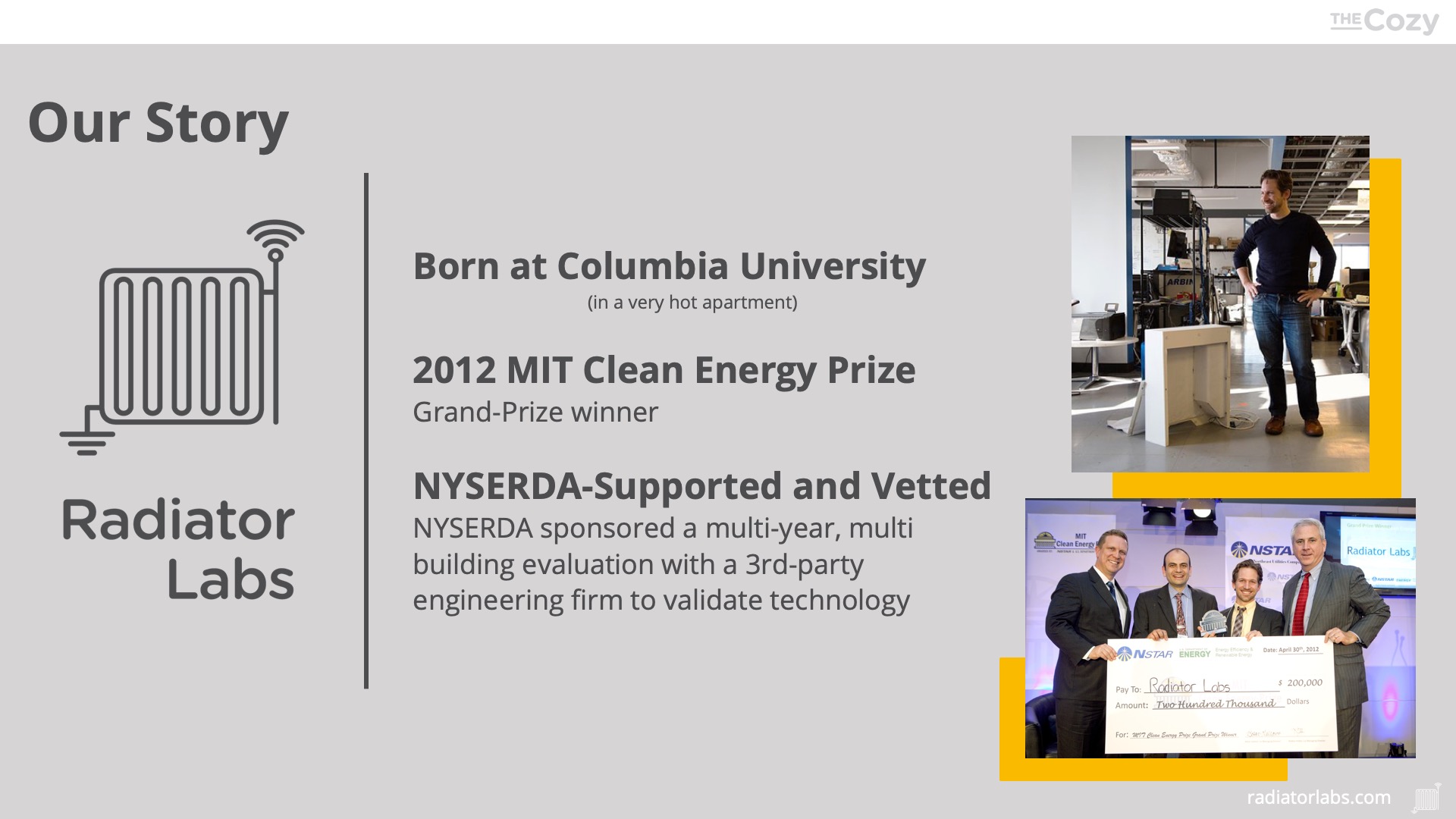
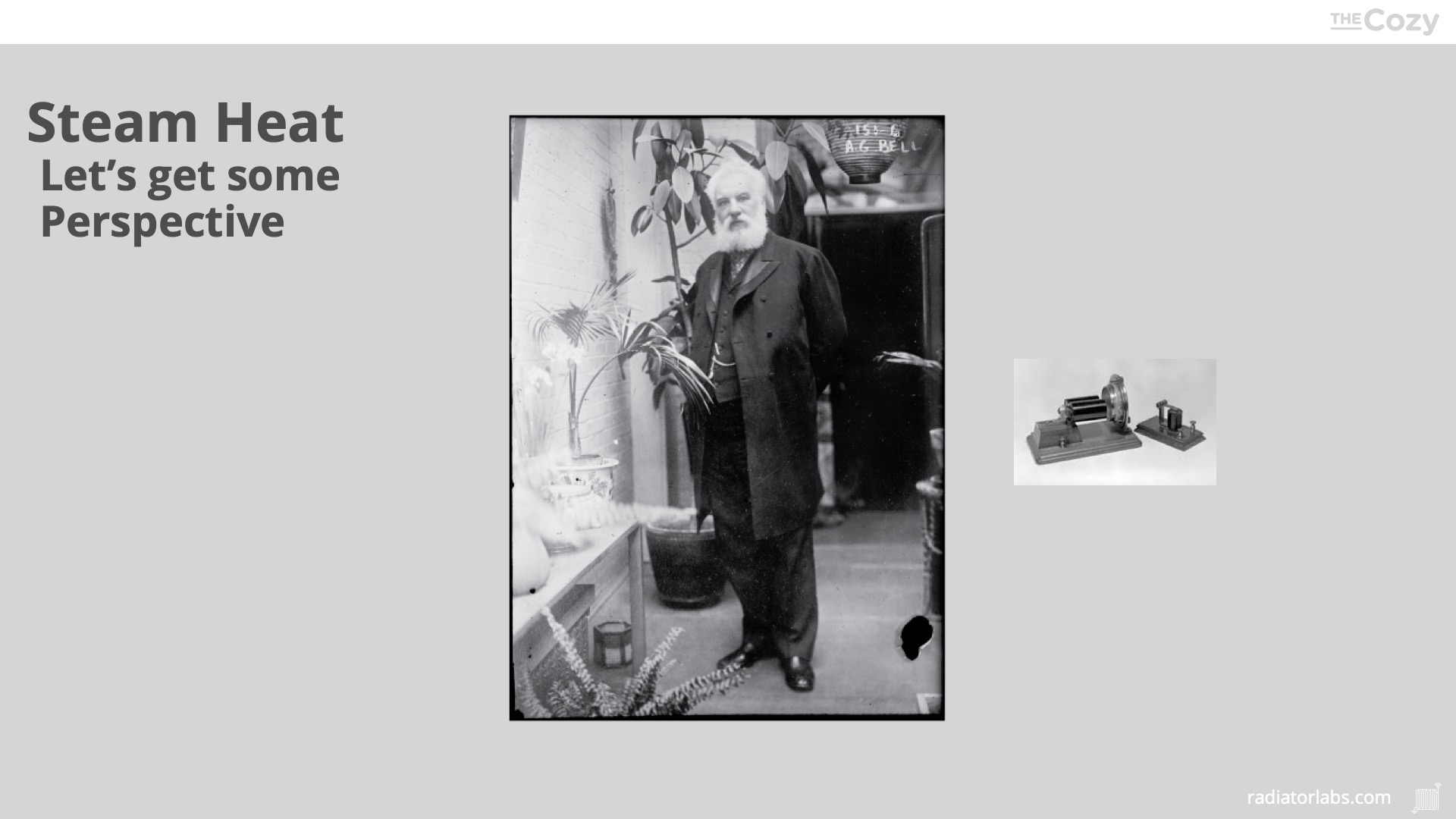
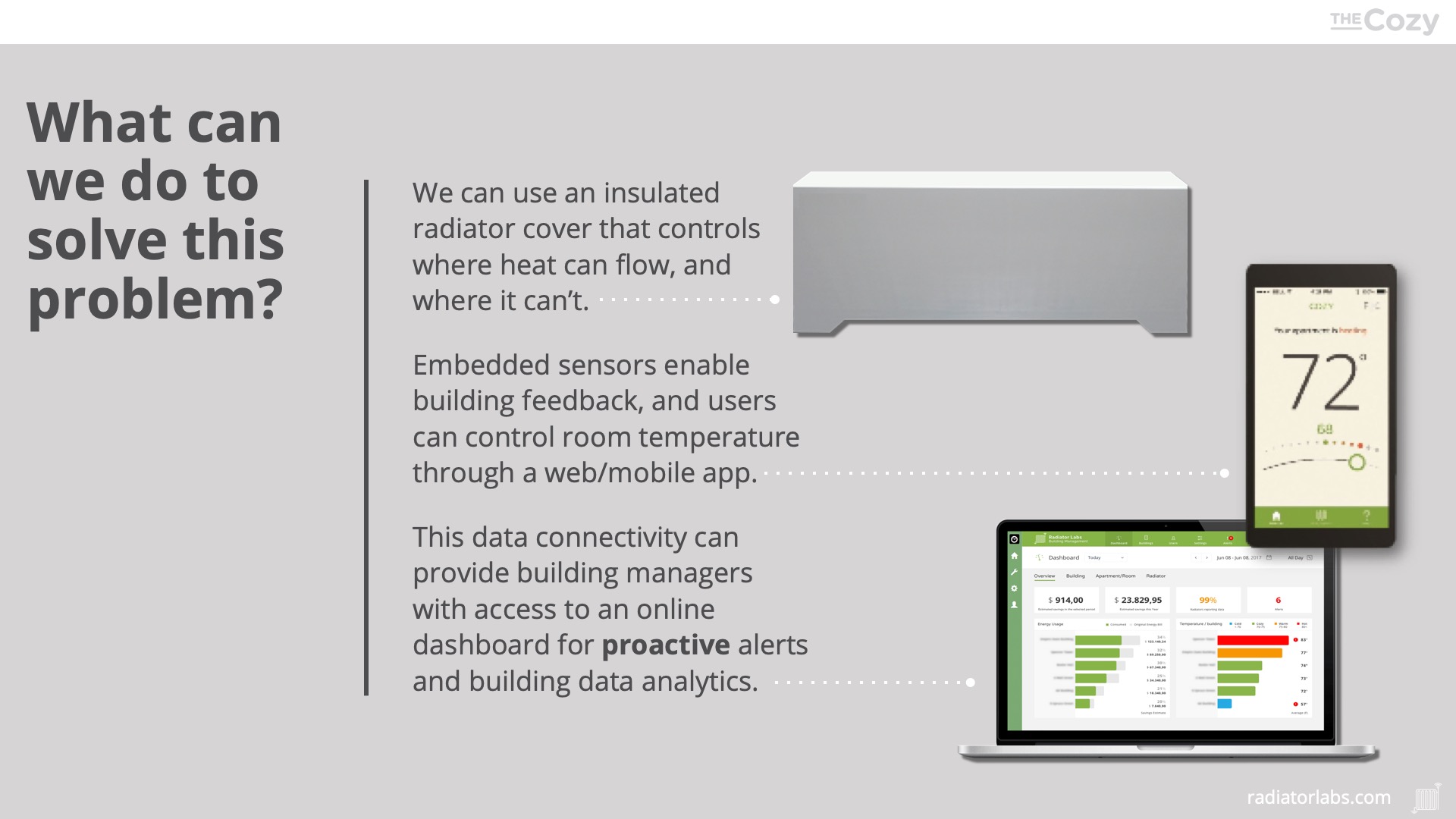
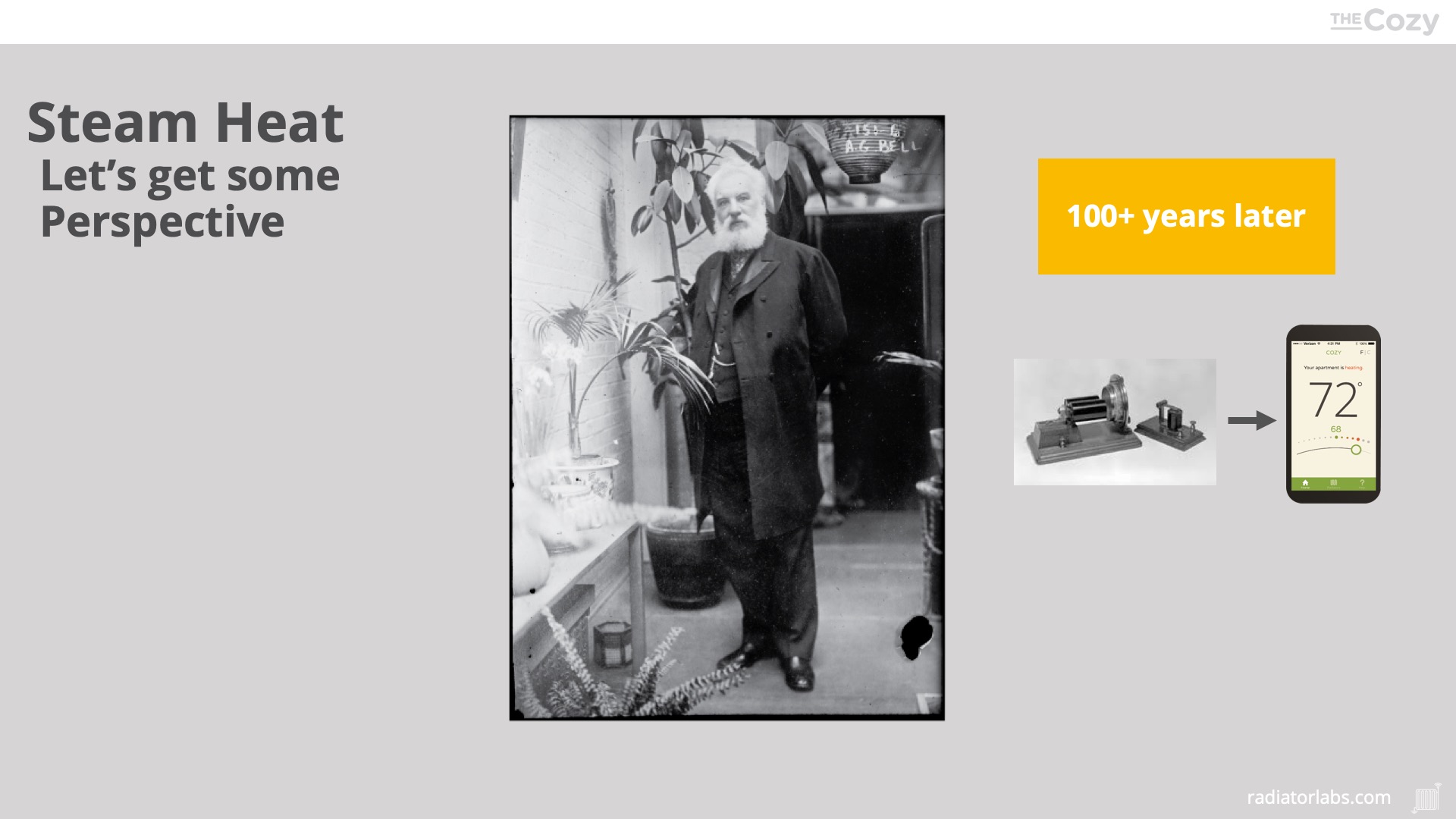
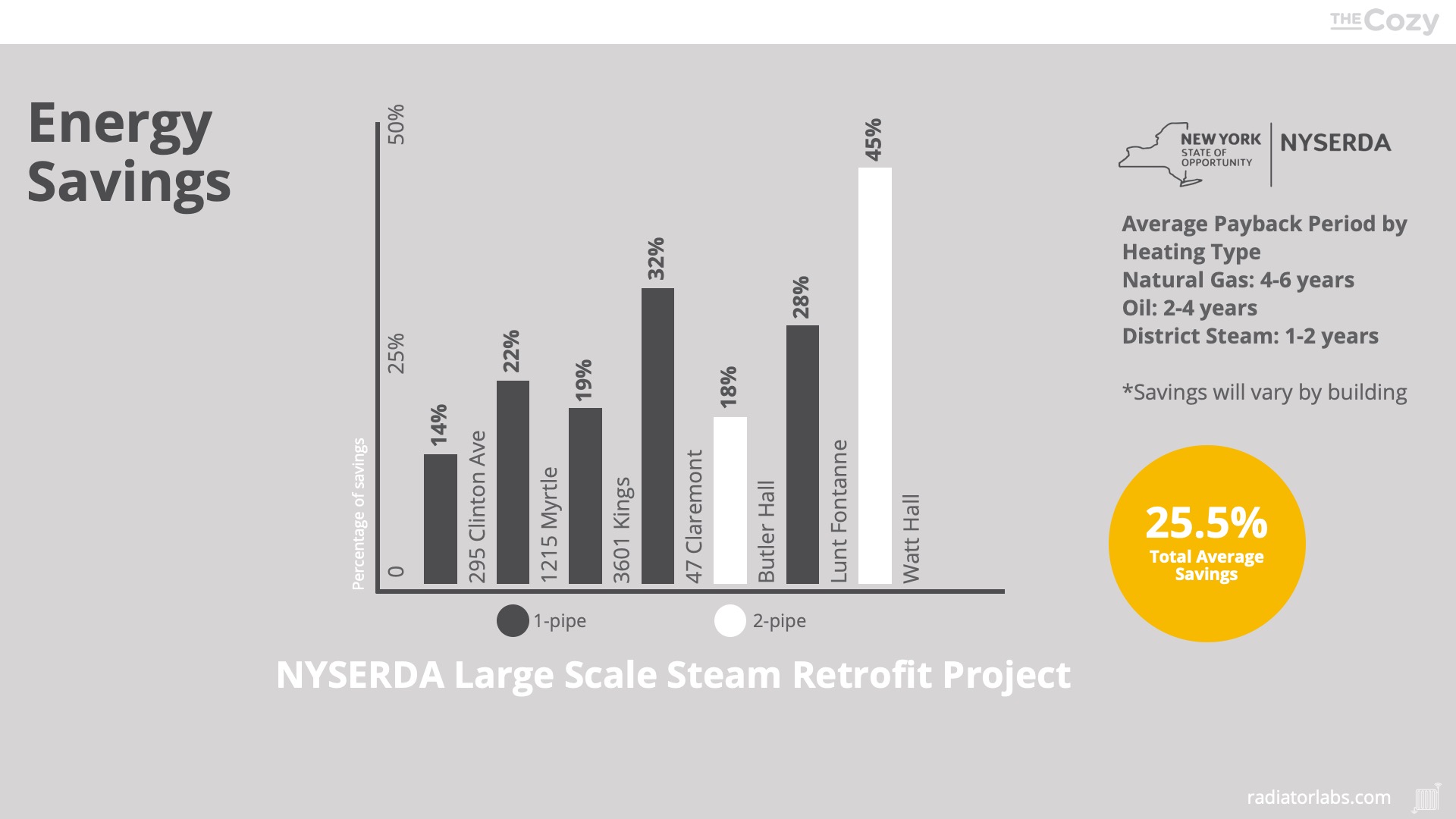
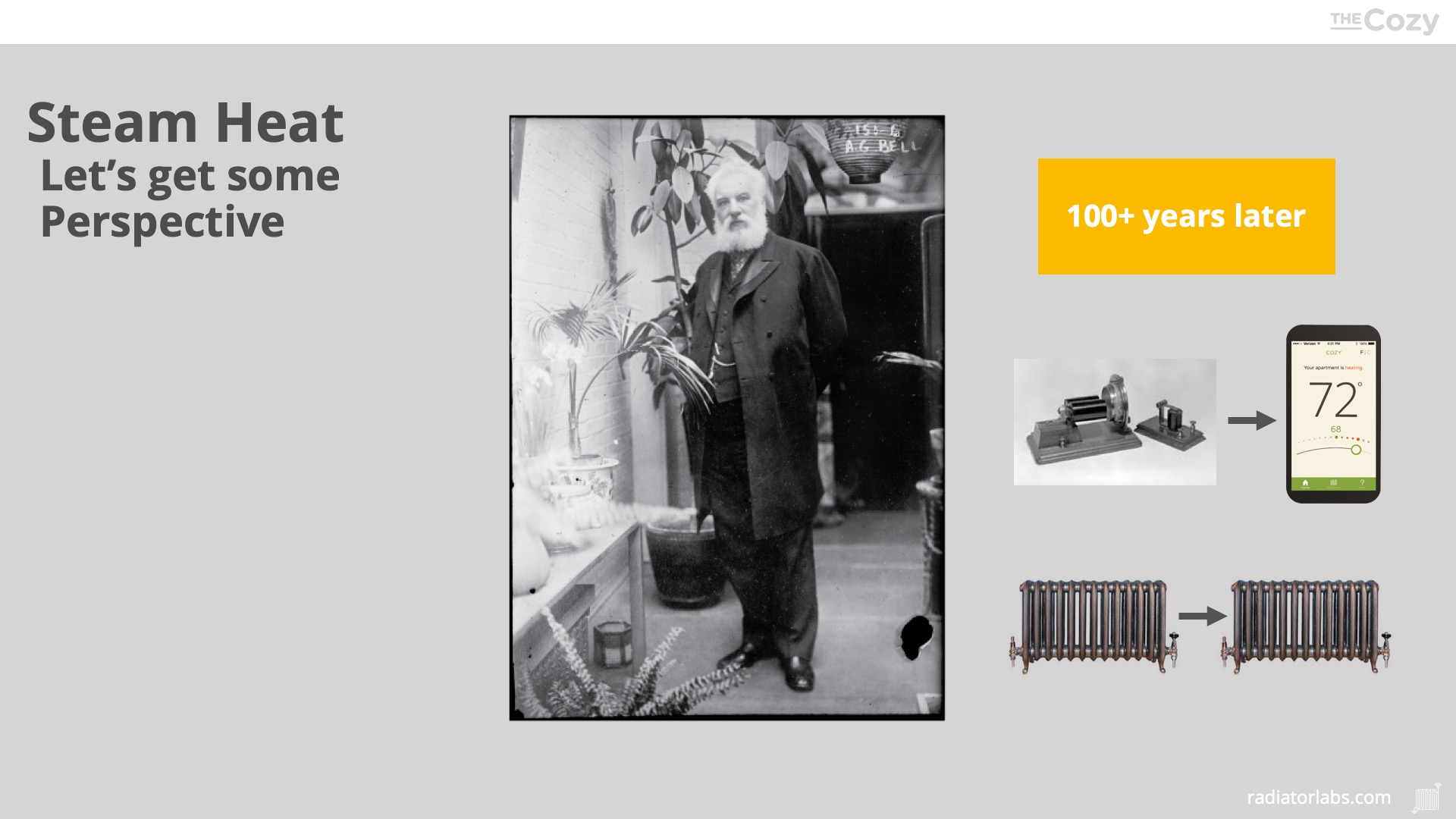







VIDEO TRANSCRIPT:
My name is Marshall Cox, the Founder and CEO of Radiator Labs and I’m going to tell you about steam heat which is always a super exciting topic. So first of all steam has a lot of problems. We all know this we we've lived in an apartment or a house in New York City in particular. And the problem isn’t with steam. Steam is actually a pretty awesome technology that has been in these building since they were built often a hundred years ago, decades at least and they’re super overheated. The problem is that it's very hard to control where steam flows from that building and you can try to do that and they were really well balanced when they were built. But then the biggest change that we've we've seen is that we've invented nearly universally retrofit, windows with a double pane insulating glass and that completely changed the balance of our buildings. And now you have apartments that are cold and need a lot of heat and people who are super hot and open the windows as a result.
Obviously people are really uncomfortable because of this so it's a problem for tenants. It's a problem for maintenance staff because these things are hard to maintain. But it's an enormous financial and ecological disaster about seven billion dollars is wasted every year in the 10 percent of the U.S. residential housing market that uses steam as a primary source of heat. in New York City alone it's one point two billion dollars and you can imagine literally taking one point two billion dollars of fuel and burning it in the streets that's essentially what we're doing every year.
I want to get some perspective on this problem so steam has been around for a long time. It's been around for a approximately the same time as the phones. This is Alexander Graham Bell invented the harmonic telegram which is here. And think about how many changes have gone through that technology in the past hundred years. We all have supercomputers in our pockets now. The amount of change is dramatic and contrast that with steam, it's not necessarily a fair comparison. We have new better heating technologies but the radiators that have been in these buildings haven't really seen anything happen in the last 100 years and this is particularly relevant here because this Alexander Graham Bell standing next to a radiator and I can guarantee you that that building is probably still here and that radiators are probably still there. These things have been stalled for literally a century sometimes more than a century and they still work which is amazing but they have a lot of issues. So I got my P.H.D. at Columbia University. I invented this technology there. My research had nothing to do with steam or radiators but I lived in a unmitigated hellhole apartment. I was super hot. The technology worked really well. We went to compete at the MIT Clean Energy Prize, won that which was amazing and was essentially the beginning of our company. We developed a full building system and iterated over the past few years and most recently NYSERDA has supported an evaluation of that technology in a bunch of buildings and I'll talk about the results later. It was very good and we were really excited about what we're doing.
Briefly, what are the things you can do to solve this problem and overheating and buildings? Most people have tried to address this from a plumbing perspective but steam is a hundred degrees Celsius gas. It's a very caustic when it condenses into water and you're talking about a two phase distribution problem that's really hard to control that kind of distribution system with a valve or other kinds of plumbing solutions doesn't really work. We've approached it from a different direction. We actually control the area around a radiator and thermodynamically manipulate the steam flow within a building by doing that. Has the benefit of being easily installed you don't have to have any contact with plumbing is especially nice not to have to mess with 100 year old pipes and it works really well. Every one of these systems says a wireless radio we communicate data in real time to the cloud that lets us learn how buildings heat up and cool down and optimize that heat generation on a building by building basis. It also lets us connect this data to people's cell phones so they can control their temperatures even setting setbacks and different time based things you can do with a normal thermostat. This is a level of control that these buildings have never had in their entire history. So it's a pretty big deal for the people who live in these buildings.
These are those results I told you about from NYSERDA. Seven buildings of the past five years. We found 25 percent average savings maximum savings was forty five percent. And I just want to point out the minimum savings over there 15 percent. That building is a LeFrak building out in Brooklyn. It is now the most efficient single pipe building in all of New York. So even in buildings that start out very efficient we can still save a lot of energy. There's a lot of waste here. To put into perspective for income for for a portfolio, if you can save 30 percent of your heating costs that translates into a net operating income increase of 10 percent because 30 percent operating costs are often in heating the building itself. So that's a big deal for for portfolios.
Now I want to transition to talk about data. The first thing, the most obvious thing is what can you do with data in real time in a room? We take temperatures and we obviously feedback that temperature into our system is pushing down to a room when it's needed that allows us to do away with the drastic overheating under heating that you get in these kinds of buildings. This is real data. You basically turn an apartment into a flat lined temperature at your set point. It's a very important and nice change. My apartment obviously has these installed.
You can get a little deeper into the data as well. So in most bigger buildings you have what's called the two pipes steam system, and every radiator has a steam trap at that point and when we installed in buildings we typically find that about 25 percent the steam traps are blown and malfunctioning which means that steam is flowing into the that line being wasted. Every broken steam trap wastes about 200 to 400 dollars a year. So you can see how this adds up very very quickly. We can use the data that we're gathering to analyze steam trap health in real time and you can imagine that maintenance programs and buildings. It's hard to measure this stuff because it's in someone's home. We can just do it in real time remotely and tell people when things break and they need be fix which increases dramatically the maintenance efficiency of portfolios.
Very quickly looking dig digging deeper into the data there are some really interesting things here. If you can look at this and the left is these are two buildings top and bottom on the left is before we installed an app on the right is after we installed each one little block in these graphs shows a apartment that's been categorized by temperature. So the red blocks are apartments that are Saunas above 80 degrees. The blue blocks are apartments that are freezing below 62 degrees and you can see that before we retrofit is a pretty even distribution of very hot apartments and very cold apartments where you'd imagine sitting in a building. After retrofit if you could see the screen here, we've dramatically increased the number of green building the green apartments. So most of the apartments now are comfortable. Of course there's still outliers on the hot side. So this is on first level to point out that our technology is awesome, it works really well but this is a very rich data set. Of the apartments that are still hot. Why are they still hot?
It turns out that we can do some some interesting cluster analysis and apply algorithms to this data to figure out what characteristics those apartments share. So maybe they're on the top floor and the roof is uninsulated maybe on the bottom floor and there's infiltration problems but they're all on on the north side and don't get sun. You can essentially figure out what's wrong with these buildings. Then no one even knew existed. And that's interesting because you can take that data. We control the boiler we know how much fuel you'll save additionally if you fix that problem. And then if you know how much that problem cost to fix you can calculate a pretty efficient pretty accurate return on investment. And that basically will unlock a significant amount of capital. People want to fix their buildings. But the capital to do so is not really available because no one knows how long they're gonna take to pay back. No one knows how much it’s going to cost to fix. No one even knows what the problems are. So what we're trying to do here is take the data that we're gathering to figure out what those problems are to go how much going to cost to save and unlock that capital to fix the big problems in our infrastructure which is primarily located in our older buildings that no one has the time or money to evaluate properly. We have a big grant from the National Science Foundation to do this. So we're pretty excited about we're doing. Thank you so much.


